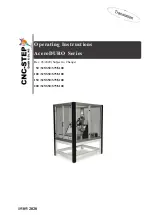
35-42
Cisco ME 3400 Ethernet Access Switch Software Configuration Guide
OL-9639-07
Chapter 35 Configuring IP Unicast Routing
Configuring BGP
Configuring BGP
The Border Gateway Protocol (BGP) is an exterior gateway protocol used to set up an interdomain
routing system for loop-free exchanges of routing information between autonomous systems.
Autonomous systems are made up of routers that operate under the same administration and that run
Interior Gateway Protocols (IGPs), such as RIP or OSPF, within their boundaries and that interconnect
by using an Exterior Gateway Protocol (EGP). BGP Version 4 is the standard EGP for interdomain
routing in the Internet.
You can find detailed information about BGP in
Internet Routing Architectures,
published by Cisco
Press, and in the “Configuring BGP” chapter in the
Cisco IOS IP and IP Routing Configuration Guide
.
For details about BGP commands and keywords, see the “IP Routing Protocols” part of the
Cisco IOS
IP Command Reference, Volume 2 of 3: Routing Protocols, Release 12.2
.
For a list of BGP commands
that are visible but not supported by the switch, see
Appendix C, “Unsupported Commands in
Cisco IOS Release 12.2(50)SE.”
Routers that belong to the same autonomous system (AS) and that exchange BGP updates run
internal
BGP
(IBGP), and routers that belong to different autonomous systems and that exchange BGP updates
run
external BGP
(EBGP). Most configuration commands are the same for configuring EBGP and IBGP.
The difference is that the routing updates are exchanged either between autonomous systems (EBGP) or
within an AS (IBGP).
Figure 35-5
shows a network that is running both EBGP and IBGP.
Figure 35-5
EBGP, IBGP, and Multiple Autonomous Systems
Before exchanging information with an external AS, BGP ensures that networks within the AS can be
reached by defining internal BGP peering among routers within the AS and by redistributing BGP
routing information to IGPs that run within the AS, such as IGRP and OSPF.
Routers that run a BGP routing process are often referred to as BGP
speakers
. BGP uses the
Transmission Control Protocol (TCP) as its transport protocol (specifically port 179). Two BGP speakers
that have a TCP connection to each other for exchanging routing information are known as
peers
or
neighbors
. In
Figure 35-5
, Routers A and B are BGP peers, as are Routers B and C and Routers C and
D. The routing information is a series of AS numbers that describe the full path to the destination
network. BGP uses this information to construct a loop-free map of autonomous systems.
AS 100
74775
AS 200
129.213.1.2
175.220.212.1
129.213.1.1
192.208.10.2
AS 300
EBGP
EBGP
192.208.10.1
175.220.1.2
IBGP
Router B
Router A
Router D
Router C
Содержание ME 3400 Series
Страница 40: ...Contents xl Cisco ME 3400 Ethernet Access Switch Software Configuration Guide OL 9639 07 ...
Страница 44: ...xliv Cisco ME 3400 Ethernet Access Switch Software Configuration Guide OL 9639 07 Preface ...
Страница 1138: ...Index IN 52 Cisco ME 3400 Ethernet Access Switch Software Configuration Guide OL 9639 07 ...
















































